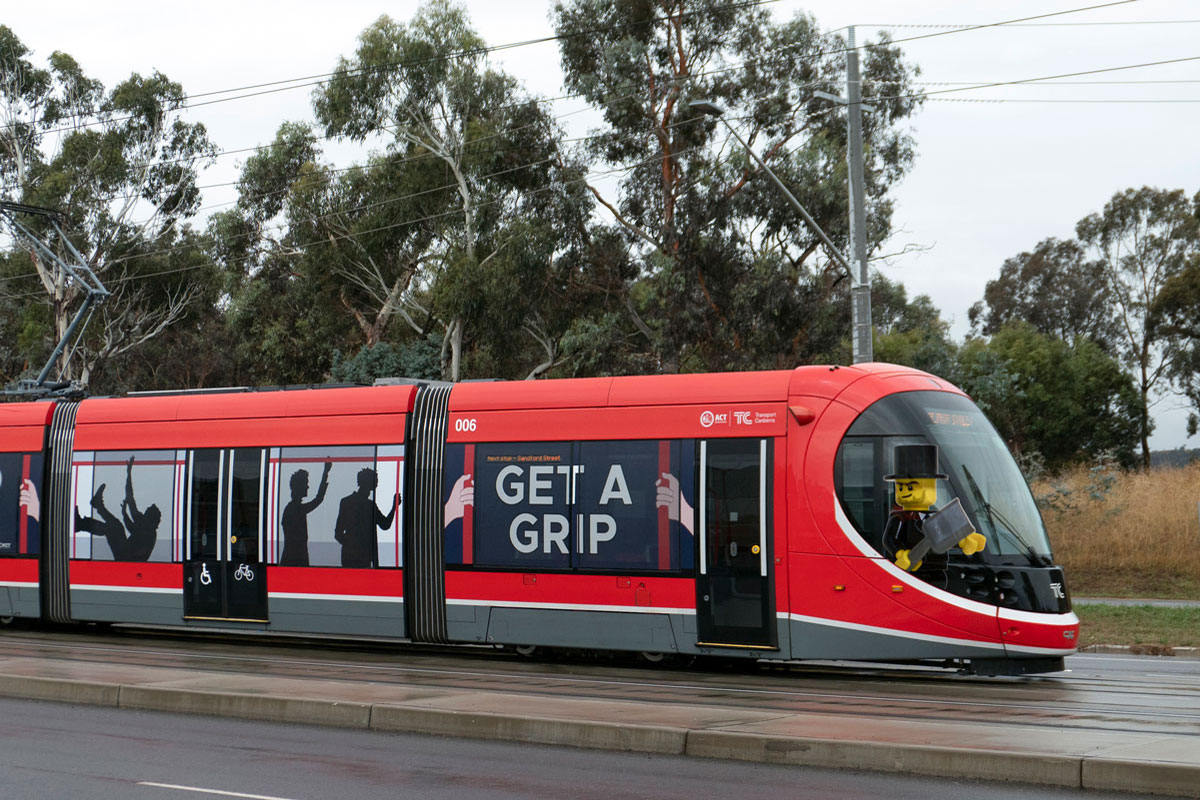
“Once people learnt of the reality of how the tram had been funded, there was a reduction in trust in both the Greens and Labor. People now know that they have been and continue to be scammed,” writes “Canberra Matters” columnist PAUL COSTIGAN.
IN 2012 when the debate about the tram kicked off, there were several people who influenced thoughts on whether the city should have a tram.
The first were Walter and Marion Griffin, the second was Katy Gallagher and the third was Zed Seselja.
The Griffins, being from Chicago, understood the benefits of a compact city and an integrated public transport system that included trams. Their plans for Canberra were for a compact city, with semi-detached housing and for public transport networked through that city.
While Canberra today is much larger and different to the Griffins’ concept, plus in the 1950-60s the planners emphasised cars (thanks to the oil lobbyists), the idea that the ACT government was again thinking in 2012 about an integrated network that included trams seemed reasonable.
When Gallagher’s ACT government talked about the first tram proposals, she gave assurances that there was no open cheque book for the tram. There were debates about the fate of the cherished Northbourne Avenue trees, about how much of the social housing would survive and whether a tram/light rail was actually the best option. The business case for the tram was not clear.
Gallagher’s government had the benefit of trust in government inherited from former chief minister Jon Stanhope.
The Canberra Liberals under the leadership of Seselja conducted negative campaigns loudly opposing loads of stuff. Seselja’s leadership did not build trust in his brand of the Canberra Liberals. The Liberals lost the 2012 ACT election. Seselja soon departed local politics, but his influence continues to this day.
The voters generally trusted that Gallagher’s government would do the right thing when it came to whether there should be a tram or not. Those outside the Greenslabor inner circles knew little about the games at play and that the insiders were determined that the tram would happen no matter what evidence was put to the contrary.
At the 2012 elections, the leader of the ACT Greens lost her seat and the leadership was handed to Shane Rattenbury. A deal was done for Labor to support the Greens’ proposal for the tram. The tram was favoured by the developer lobby and so it became a policy owned by ACT Labor.
As far as the lobbyists were concerned, the tram was about opening up development opportunities between Civic and Gungahlin. Follow the money!
The Greenslabor government and its supporters constantly play with statistics to convince themselves about the success of the tram. For the development lobby, these statistics are irrelevant as the success of the tram has been the creation of profits. The presence of the tram along that corridor is a gift from the ratepayers to the developers. Building the Better Normal.
Greenslabor’s twisted version of being progressive is to justify the unjustifiable with a flow of carefully crafted deceptive spin from the chief minister’s well-paid communication consultants. The tram looks good for photo opportunities, it moves people along the Civic-Gungahlin transport corridor (there is no other choice except cars), but it has turned out to be bright-red folly paid for by reducing services in other portfolios.
The financing of the tram drew funding allocations away from essential government programs such as social housing, the environment, climate change, city maintenance, the police, health and education.
From December 2014 Andrew Barr has been the chief minister and treasurer making those decisions. Once people learnt of the reality of how that tram had been funded, there was a reduction in trust in both the Greens and Labor. People now know that they have been and continue to be scammed.
Back in 2012 Seselja’s negative campaigns drove voters to consider any alternative and even with some doubts, the majority voted for Greenslabor. That electoral success was translated as a vote for the tram. While this may be partly true, a major factor in the 2012 election was Seselja. This rejection of the Liberal’s negative campaigns was repeated in 2016 and 2020.
For the last decade the progressive voting electorate has essentially had little choice – the not-so-progressive Greenslabor and that included a de-facto vote for the tram.
People remain desperate for an opportunity to vote for a real progressive ACT government that is honest, does not use spin and can be trusted with how they make decisions. Will the October 2024 elections be any different?
Paul Costigan is a commentator on cultural and urban matters. There are more of his columns at citynews.com.au
Who can be trusted?
In a world of spin and confusion, there’s never been a more important time to support independent journalism in Canberra.
If you trust our work online and want to enforce the power of independent voices, I invite you to make a small contribution.
Every dollar of support is invested back into our journalism to help keep citynews.com.au strong and free.
Thank you,
Ian Meikle, editor




Leave a Reply